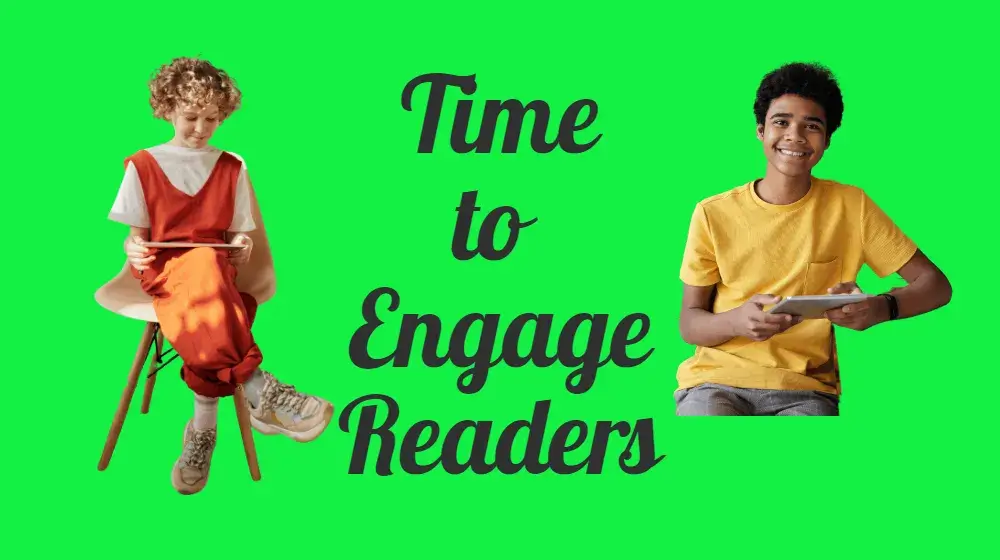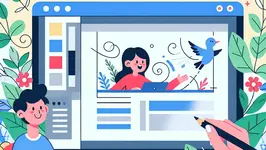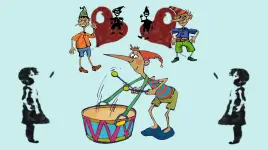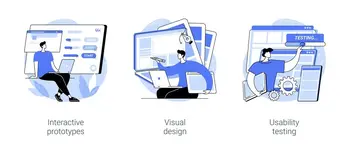
Table of contents
GIFs are a popular way to make people interested in different types of content. They can be used in social networking platforms, email marketing, and e-Learning to explain complex topics quickly. A
survey on time.com
showed that most millennials think GIFs can show their feelings better than words alone.
The use of GIFs to engage readers can be a powerful tool to make a brand more popular. For example, in e-learning, animated GIFs can be used to make learning simple and more enjoyable. They can also be used to entertain and inform people on social networking platforms. In email marketing, animated GIFs can grab people’s attention and make them click on the call to action.
However, it is important to use GIFs carefully. Too many GIFs can be overwhelming and distracting. Using irrelevant or inappropriate GIFs can damage a brand’s image. This article will discuss how to use GIFs effectively to engage readers and improve the user experience.
What does GIF stand for?
GIF is a file format for pictures.
It was introduced in 1987 by CompuServe.
GIF stands for Graphics Interchange Format. This means that GIFs can be used on different computers and phones.
-
GIFs can be animated. This means that they can show a sequence of pictures one after the other. This makes GIFs good for showing short videos or emotions.
-
GIFs can also be transparent. This means that parts of the image can be see-through. This makes it easy to put GIFs on different backgrounds.
-
GIFs are popular on social networking platforms, messaging apps, blogs, and websites. They are small and easy to share. This makes them a good way to share pictures and videos.
Overall, GIFs are a flexible and efficient way to share pictures and videos. They can be animated, transparent, and small. This makes them a popular format for sharing visual content online.
What is the difference between GIFs and Emojis?
GIFs and emojis are both ways to convey feelings with pictures. GIFs are mini-videos, and emojis are images that don’t move. GIFs can show more feelings than emojis because they can show a series of pictures in a row. Emojis are easier to use because you can just type them in. GIFs are more fun because they can show funny or silly things. Here are the differences between GIFs and emojis:
-
Format: GIFs are pictures that can move. They are made from videos or pictures, and you can make them yourself. Emojis are small pictures that do not move.
-
Communication style: GIFs are used to show emotions, actions, or reactions. They can be used to show things that are hard to say with words. Emojis are used to show simple emotions or ideas. GIFs are supported by both computers and mobile devices. Gifs work better when it comes to visual communication
-
Usage: GIFs are often used in online chats, social networking platforms, and messaging apps. They can be used to make conversations more fun or to show something that is hard to say with words. Emojis are often used in texts or messages to show emotions or reactions.
-
Complexity: GIFs can be more detailed because they move. They can show a lot of different things. Emojis are simpler and can only show a few things.
-
Creation: GIFs can be made from videos, pictures, or by using software. Emojis are already made and you cannot change them. These days there are many free GIFs to engage readers.
In summary, GIFs are moving pictures that can be used to show a lot of different things. Emojis are simple pictures that are used to show simple emotions or ideas. Both GIFs and emojis can be used to make conversations more fun and engaging.
Why are GIFs so popular?
There are several reasons why GIFs have become so popular. Firstly, GIFs simply convey emotions and reactions in a way that words and static images cannot. They can compress a lot of information into something that’s easily shareable, which is a
unique advantage that GIFs
had in the early days of the internet before online video took off.
GIFs can also be easily shared across multiple platforms and are compatible with most devices and browsers. Additionally, GIFs have become a part of internet culture and are often used in memes and other forms of online humor. The BBC notes that GIFs
reflect the “atomisation of information culture”
and have an incredibly multi-generational scope, in their themes. Finally, GIFs are easy to create and share, making them an accessible form of visual communication.
Do GIFs increase engagement rate?

Yes, GIFs can increase engagement rates in various settings, including websites, social media platforms, and email marketing. Studies have shown that using GIFs in email can increase engagement by as much as 55%. Additionally, GIFs have been shown to improve email conversion rates by 103%. They are fun, engaging, and can attract attention, leading to higher levels of audience engagement. However, it’s important to optimize GIF file sizes to ensure faster download speeds and avoid negatively impacting engagement rates.
How do GIFs increase Engagement Rate?
GIFs can increase engagement rate in a number of ways:
-
1. They are visually appealing and attention-grabbing
GIFs are simply more interesting to look at than static images. They can capture a moment in time, or tell a story, in a way that text or photos cannot. This makes them much more likely to stand out in a crowded feed or inbox.
-
2. They can convey emotion and humor
GIFs can convey emotion and humor. They are a great way to add emotion and humor to your content. This can help to make your content more engaging and memorable. For example, if you’re writing a blog post about a funny experience you had, you could use a GIF to illustrate the moment. This would help your readers to visualize what happened and make them more likely to connect with your story.
-
3. They can be used to explain complex concepts
GIFs can be used to break down complex concepts into easy-to-understand visuals. This can be helpful for educational content, tutorials, or even just for explaining something to a friend.
-
4. They are easy to share and embed
GIFs are usually small and easy to share on social media and in emails. People like to share them with their friends, which means that your content will get seen by more people. This can help you get more followers and likes on your social network pages. Even organisations can use GIFs in email campaigns to make interesting communication with their email clients. The best GIFs to engage readers are funny and entertaining.
What are the types of GIFs?
There are several types of GIFs that serve different purposes and cater to various contexts. Here are some common types:
-
Animated Illustrations: These GIFs are designed to showcase animated illustrations or artwork. They can be used to bring static images to life, showcase creative designs, or add a visually captivating element to your content.
-
Cinemagraphs: Cinemagraphs are GIFs that combine static images with subtle, repeated movements in specific areas. They create a mesmerizing effect by blending the stillness of a photograph with the motion of a video. Cinemagraphs can add an elegant and artistic touch to your content.
-
Tutorial or Process GIFs: These GIFs demonstrate step-by-step processes or provide visual instructions. They are commonly used in tutorials, DIY guides, or any content that requires a visual representation of a series of actions or procedures.
-
Memes and Pop Culture GIFs: Memes and pop culture GIFs are highly relatable and often include humorous or sarcastic references to current trends, TV shows, movies, or internet culture. They are frequently shared on social networking platforms for comedic purposes.
-
Product or Service GIFs: These GIFs showcase products or services in action. They can highlight key features, demonstrate usage scenarios, or provide a brief preview. Product or service GIFs are commonly used in marketing and promotional materials.
-
Text Overlay GIFs: These GIFs feature text overlays on top of animated images. They are useful for presenting short messages, quotes, or announcements in a visually appealing and attention-grabbing manner.
These are just a few examples of the types of GIFs available. The possibilities for creating and using GIFs are vast, and you can tailor them to suit your specific content needs and objectives.
How to Find and Create GIFs
1. Finding GIFs Online
There are many places on the internet where you can find lots of GIFs. These places are good for finding GIFs that match your stuff. Some popular places include:
(a) Giphy:
Giphy is a popular search engine for GIFs. It offers a vast collection of GIFs that can be used for various purposes, including social media posts, emails, and text messages. Giphy also partners with brands and creators to offer unique and exclusive content.
(b) Gfycat:
Gfycat is a direct competitor to Giphy. It offers high-quality GIFs and videos that can be easily embedded on websites and social media platforms. Gfycat also offers a range of features, including GIF creation tools and a library of stickers and emojis.
(c) Tenor:
Tenor is another popular search engine for GIFs. It offers a vast collection of GIFs that can be used for various purposes, including social media posts, emails, and text messages. Tenor also partners with brands and creators to offer unique and exclusive content.
These websites have a search bar where you can enter keywords related to your content and find relevant GIFs. Some websites also have a filter option that allows you to search for specific types of GIFs, such as reaction GIFs or animated memes.
When using GIFs from these websites, make sure to check the licensing and usage rights. Some GIFs may be copyrighted or have restrictions on usage.
2. Creating Your Own GIFs
If you can’t find a suitable GIF online, you can create your own. There are a number of tools available that allow you to create GIFs easily. Some of the popular tools include:
(a) Giphy GIF Maker
Giphy GIF Maker is a free online tool that allows you to create GIFs from videos, images, or a series of images. You can add captions, stickers, and filters to your GIFs. It also has a webcam feature that allows you to record a GIF directly from your webcam.
(b) Imgflip GIF Maker
Imgflip GIF Maker is another free online tool that allows you to create GIFs from videos, images, or a series of images. You can add captions, stickers, and effects to your GIFs. It also has a feature that allows you to crop and resize your GIF.
(c) Canva
Canva is a graphic design tool that also has a free GIF maker feature. You can create GIFs from videos, images, or a series of images. You can add text, stickers, and effects to your GIFs. Canva also offers a range of templates that you can use to create your GIF.
Creating your own GIFs allows you to have more control over the content and customize it according to your needs. You can use your own images or videos and add text or effects to make it more engaging.
When creating your own GIFs, make sure to optimize the size and quality for faster loading times. You can also add captions or annotations to make it more informative and shareable.
Best Practices for Using GIFs
When it comes to using GIFs in marketing, there are certain best practices to follow to ensure they are effective and engaging. Here are some tips:
(i) Choosing the Right Moment

One of the keys to using GIFs effectively is to choose the right moment to use them. GIFs are great for adding personality and humour to your content, but they can also be distracting if used at the wrong time. Consider using GIFs to emphasize a specific point, to add context to a situation, or to showcase a product or service.
(ii) Using GIFs Sparingly
While GIFs can be a great addition to your marketing content, it’s important to use them sparingly. Too many GIFs can make your content feel cluttered and overwhelming and can detract from your message. Use GIFs strategically and sparingly to make the most impact.
(iii) Optimizing for Load Time
Another important consideration when using GIFs in marketing is load time. Large, high-quality GIFs can take a long time to load, which can be frustrating for users and can lead to them abandoning your content. To optimize for load time, consider using smaller, lower-quality GIFs, or compressing larger GIFs to reduce their file size. Additionally, be sure to test your content on different devices and connections to ensure it loads quickly and smoothly for all users.
Examples of Brands Leveraging GIFs
Many brands have been using GIFs to engage their audience and increase their reach. Here are a few examples of how some of the top brands have leveraged GIFs in their marketing campaigns:
-
NPR: NPR used an animated map to show the rise of the Islamic state. This GIF helped to visualize a complex issue and made it easier for viewers to understand the situation.
-
The Huffington Post: The Huffington Post collaborated with fashion editors to show five ways to wear a scarf. These GIFs were a fun and creative way to showcase fashion and provide inspiration for their audience.
-
Kraft: Kraft created custom content for their Tumblr audience using GIFs. This helped to create a more personalized experience for their followers and made their content more shareable.
-
Typeform: Typeform used GIFs in their hiring form to add an element of delight. This helped to make the application process more engaging and memorable for potential candidates.
These examples show how brands can use GIFs to create engaging content that resonates with their audience. By using GIFs, brands can add personality and humour to their marketing campaigns, which can help to increase brand awareness and drive engagement.
Conclusion
Using GIFs in content marketing can be a powerful way to engage readers and increase brand awareness. By providing visual interest, breaking up text, and adding humour or surprise, GIFs can help capture attention and keep readers engaged.
When using GIFs, it’s important to keep a few things in mind. First, make sure the GIFs are relevant to the content and add value to the reader’s experience. Second, keep the GIF file size small to ensure fast loading times and avoid frustrating readers. Finally, use GIFs sparingly and strategically, rather than overwhelming the reader with too many animations.
Overall, incorporating GIFs into content marketing can be a fun and effective way to engage readers and increase brand awareness. By following best practices and using GIFs thoughtfully, content creators can create a more dynamic and engaging experience for their audience.




















